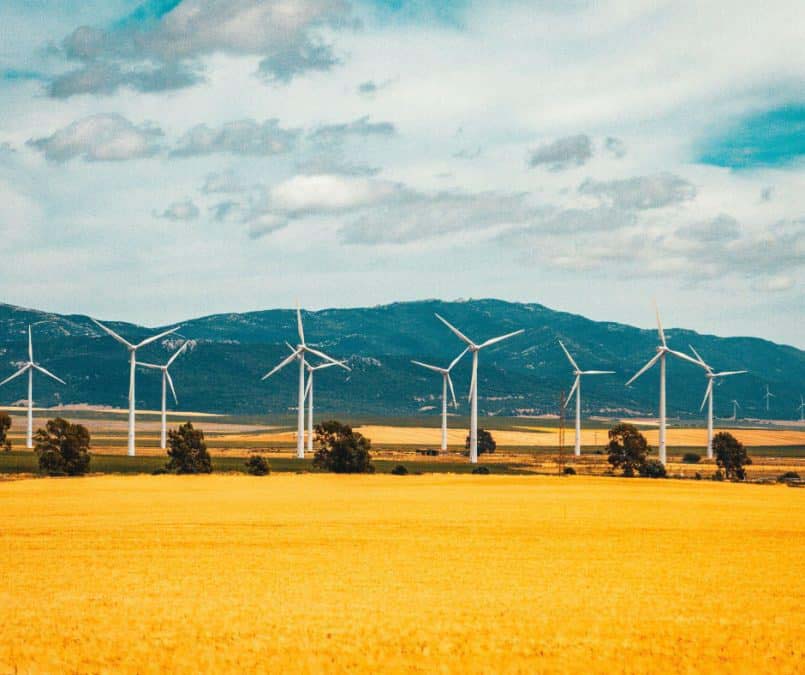Why Green Mortgages Matter in 2026
Are you looking for a way to lower your bills and make your home more eco-friendly? A green mortgage could be the solution.
Green mortgages reward you for buying or upgrading a home that uses less energy. They can mean lower interest rates, cash back, or bigger loan approval amounts—helping you reduce your carbon footprint.
At Gustan Cho Associates, we specialize in helping borrowers find the right loan programs—even the ones most banks don’t offer. Green mortgages are one of the fastest-growing mortgage options in 2026, and we’re here to explain how they work.
So, What’s a Green Mortgage and How Does it Actually Work?
A green mortgage is a home loan designed for individuals who buy or upgrade to energy-efficient homes. It provides lower interest rates and cash rewards for energy upgrades, which makes it easier to get larger loans.
Who it’s for:
- Homebuyers or homeowners looking to make energy-efficient upgrades.
What you get:
- Lower interest rates
- Cash-back offers for energy improvements
- Better chances of approval for larger loans
What you don’t get:
- Standard mortgage benefits may not apply
- Possible restrictions on property types or improvements
Lower bills and go green with an Energy-Efficient Mortgage
Roll energy upgrades into your home loan and cut monthly utility costs.
What Does “Green” Mean in a Mortgage?
When lenders say “green,” they mean energy-efficient and eco-friendly.
This could include:
- Homes with solar panels
- Properties using geothermal or wind energy
- Energy Star–rated HVAC systems or appliances
- Homes with strong insulation, efficient windows, and low utility use
Green homes are not just about saving the planet—they’re about saving you money every month.
What Types of Green Mortgages Are Available in the U.S.?
FHA and VA Energy Efficient Mortgages (EEMs)
FHA and VA Energy Efficient Mortgages (EEMs), provided by the Federal Housing Administration and the Department of Veterans Affairs, allow borrowers to integrate the costs of energy efficiency improvements into their mortgage. This option not only facilitates the financing of upgrades but also increases borrowing limits, making it easier for homeowners to invest in energy-efficient enhancements.
Fannie Mae HomeStyle® Energy Mortgage
The Fannie Mae HomeStyle® Energy Mortgage allows homeowners to finance energy improvements by providing up to 15% of the home’s appraised value. This mortgage option covers a variety of upgrades, including insulation, windows, solar panels, and energy-efficient appliances, making it an excellent choice for those looking to enhance their home’s energy efficiency.
Freddie Mac GreenCHOICE Mortgage®
The Freddie Mac GreenCHOICE Mortgage® program enables borrowers to finance up to $6,500 specifically for energy upgrades. This financing can be utilized for various energy-efficient improvements and appliances, helping homeowners make their properties more sustainable and environmentally friendly.
Conventional Green Mortgages
Some banks and credit unions provide conventional green mortgages that offer rate discounts or rebates based on a home’s performance in the Home Energy Rating System (HERS). A lower HERS score indicates greater energy efficiency, making the home eligible for these financial incentives.
Do I Qualify for a Green Mortgage Loan?
Most lenders will require:
Credit Score
When looking for a green mortgage, lenders usually check your credit score pretty closely. Lots of programs are flexible, especially FHA and VA loans, which can take scores as low as 580. If you can keep your credit score in good shape, you’ll be more likely to snag better loan deals.
Property Standards
A crucial aspect of qualifying for a green mortgage is ensuring that the property meets specific energy efficiency standards. This often involves obtaining a Home Energy Rating (HERS) report, which evaluates the home’s energy performance and efficiency. Meeting these benchmarks helps in loan qualification and contributes to long-term savings on energy costs.
Documentation
To successfully apply for a green mortgage loan, applicants must provide comprehensive documentation that showcases their financial stability. This includes details about income, existing debts, and other standard mortgage requirements. Proper documentation helps lenders assess your ability to repay the loan and supports your application.
Energy Audit
Sometimes, lenders may require a certified energy audit to qualify for a green mortgage. This audit assesses the home’s energy performance and identifies potential improvements that can lead to significant energy savings. By providing an energy audit, you can strengthen your application and demonstrate the value of energy-efficient upgrades.
At Gustan Cho Associates, we can quickly help you determine whether you qualify—it only takes a few minutes!
Benefits of a Green Mortgage
- Lower Utility Bills – Use less energy, pay less money.
- Lower Mortgage Costs – Enjoy reduced rates, fees, or higher approval amounts.
- Higher Home Value – Green features make your property more attractive to buyers.
- Eco-Friendly Living – Reduce your carbon footprint while improving comfort.
- Access to Rebates and Tax Credits – Many states and utility companies offer extra incentives in 2026.
Green Mortgage vs Standard Mortgage
| Feature | Green Mortgage Loan | Standard Mortgage Loan |
| Purpose | Rewards energy-efficient homes and upgrades | Finances purchase or refinance only |
| Interest Rates | May offer lower rates or discounts | Regular market rates |
| Loan Amount | Can increase debt-to-income limits or allow financing for upgrades | Based only on home price and borrower qualifications |
| Upgrades Covered | Yes – solar panels, insulation, HVAC, windows, appliances | No – upgrades not included in financing |
| Utility Savings | Lower bills thanks to energy efficiency | No direct impact on utility bills |
| Incentives | Rebates, cashback, tax credits, and grants available | None beyond standard terms |
| Eligibility | Based on home’s energy performance (HERS rating, energy audit, or new build efficiency) | Based on credit, income, and property value |
| Home Value Impact | Often increases resale value and buyer demand | Neutral impact on energy efficiency |
| Environmental Benefits | Supports renewable energy and lowers carbon footprint | No environmental benefits tied to loan |
| Best For | Borrowers who want to save money long term and make eco-friendly improvements | Borrowers focused only on buying or refinancing without upgrades |
Drawbacks of a Green Mortgage
Upfront Costs
One of the primary drawbacks of a green mortgage is the initial financial investment required. Homebuyers may need to budget for energy audits, certifications, and inspections, which can add to the overall expenses. These costs can deter some individuals from pursuing green financing options, especially if they are already stretched thin financially.
Limited Lenders
Another issue is the limited availability of lenders that offer green mortgage programs. While financial institutions supporting environmentally friendly loans are gradually increasing, many banks still do not provide these options. This scarcity can make it challenging for prospective homeowners to find suitable financing for energy-efficient properties.
Contractor Dependence
Homeowners interested in upgrading for energy efficiency often rely on contractors to perform the necessary work. However, finding trustworthy and experienced companies can be challenging, leading to potential delays or subpar work. This dependency can create stress and uncertainty about the quality of improvements made to the home.
Savings May Vary
Lastly, while green mortgages promise savings on energy bills, the actual results can vary significantly from initial projections. Factors such as the efficiency of upgrades, regional energy costs, and usage patterns can all influence savings outcomes. Consequently, homeowners may find themselves disappointed if their energy costs do not decrease as much as anticipated.
Use an FHA or VA EEM to upgrade efficiently
Explore program limits, required audits, and how funds are allocated.
How Do I Get a Green Mortgage Loan in 2026?
- Find a lender offering green mortgage programs.
- Get an energy audit or HERS rating (if required).
- Apply for pre-approval with income and credit details.
- Select energy improvements and get contractor bids.
- Close on your loan—rebates or incentives may follow after upgrades.
What Energy Improvements Can I Finance With a Green Mortgage?
- Solar panels
- Energy-efficient windows & doors
- High-efficiency HVAC systems
- Tankless water heaters
- Insulation upgrades
- Energy Star appliances
Is a Green Mortgage Worth It in 2026?
If you’re considering a Green Mortgage in 2026 and plan to stay in your home for several years, it could be a worthwhile investment. This option not only allows you to save money each month but also adds long-term value to your property. Additionally, you may qualify for various rebates and tax credits, further enhancing the financial benefits of your decision.
Why Trust Gustan Cho Associates for Green Mortgages?
At Gustan Cho Associates, we bring:
- Experience: We’ve closed loans that other lenders couldn’t in 50 states.
- Expertise: Our team understands complex programs like FHA EEMs, Fannie Mae HomeStyle, and Freddie Mac GreenCHOICE.
- Authority: We’re recognized nationwide for helping borrowers denied elsewhere.
- Trust: No overlays, no unnecessary rules—just straightforward approvals.
How Nelson Increased His Home Value by $20K
One of our clients in Illinois, Nelson, upgraded an older home with insulation, new windows, and an Energy Star HVAC system. With a green mortgage, their monthly utility bill dropped by $180, and they received $4,500 in rebates. Their home’s appraisal value also increased by $20,000 (results vary).
Takeaway: Should You Get a Green Mortgage in 2026?
If you want to save money, live more comfortably, and boost your home’s value, a it could be your best option.
At Gustan Cho Associates, we make the process stress-free. Whether buying a new home or upgrading your current one, our experts will walk you through every step.
Borrowers who need a five-star national mortgage company licensed in 50 states with no overlays and who are experts on different types of mortgages, please contact us at 800-900-8569, text us for a faster response, or email us at alex@gustancho.com. The team at Gustan Cho Associates is available 7 days a week, on evenings, weekends, and holidays.
Frequently Asked Questions About Green Mortgages:
What is a Green Mortgage?
A green mortgage is a home loan (or add-on feature) that rewards energy efficiency—either because the home is already efficient or because you’re financing upgrades like insulation, HVAC, or solar. The goal is to lower your monthly energy costs and improve the home’s performance.
How do Green Mortgages Work?
Most green mortgage programs let you roll eligible energy upgrades into your mortgage instead of using a separate loan or credit card. Depending on the program, you may need an energy report/audit, contractor bids, and the upgrades often must be “cost-effective” (savings support the cost).
What is an Energy Efficient Mortgage (EEM)?
An EEM is a mortgage option that considers energy savings when financing a purchase or refinance and/or when adding energy improvements. EEMs are a way to fund an efficient home or improvements with a mortgage.
What Home Improvements Qualify for a Green Mortgage or EEM?
Common eligible upgrades include insulation, air sealing, efficient windows/doors, high-efficiency HVAC systems or heat pumps, water heaters, and, in many cases, solar-related improvements (program rules vary). Always confirm the improvement list with the lender/program before ordering work.
How Much Extra Can I Borrow with an FHA Energy Efficient Mortgage?
With an FHA EEM, the loan amount can be based on the home value plus the cost of energy improvements, and the improvements typically need to be cost-effective. Specific caps/limits depend on FHA guidance and your lender’s process, so it’s important to price the upgrades early.
How Does a VA Energy Efficient Mortgage Work (and What are the Limits)?
VA guidance commonly categorizes documentation into tiers: up to $3,000 (simpler documentation) and $3,000–$6,000 (typically requires demonstrating savings versus cost). If the improvements exceed $6,000, additional review/requirements can apply.
Do I Need a Home Energy Audit or a HERS Rating?
Sometimes yes. Many programs require an energy report/audit when improvements exceed a certain amount, or to document projected savings. For example, lenders often reference thresholds of $3,500 (HomeStyle Energy) and $6,500 (GreenCHOICE) as the point at which an energy assessment becomes more important.
Can I Refinance and Roll Energy Upgrades into the New Loan?
Yes—some EEM/green options work for refinances as well as purchases, allowing you to fund qualifying improvements while refinancing. You’ll still need to meet standard income/credit requirements and follow the program’s documentation rules.
Are Green Mortgages Worth it?
They can be—especially if you plan to stay in the home long enough for savings to add up. A simple way to think about value is: Break-even ≈ upgrade cost ÷ monthly utility savings (example: $6,000 ÷ $100/mo ≈ 60 months).
Are There Rebates or Tax Credits for Energy-Efficient Upgrades in 2026?
State and utility rebates can still exist, but federal homeowner credits were changed by the One Big Beautiful Bill Act (signed July 4, 2025). The IRS states that §25C (home improvement credit) isn’t allowed for property placed in service after December 31, 2025, and §25D (residential clean energy credit) isn’t allowed for expenditures after December 31, 2025.
This article about “Green Mortgage: A Guide to Energy-Efficient Home Financing” was updated on January 6th, 2026.
Go green on a purchase or a refinance.
Add improvements at purchase or roll upgrades into a refi for one payment.









